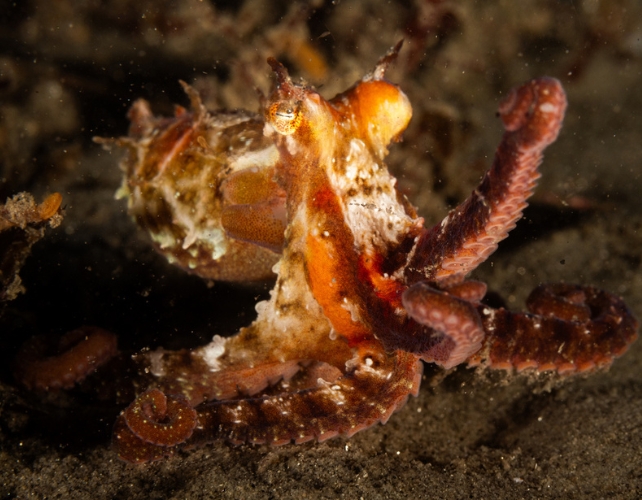Octopuses are masters of camouflage and disguise. An alarmed octopus can vanish even while you watch, flawlessly transforming into what looks like a piece of coral-encrusted rock, or another species of sea creature entirely.
It's one of the most remarkable tricks in an animal kingdom full of remarkable tricks… but new research suggests that it's not without a heavy price.
The metabolic cost of changing color could be quite high indeed – and it could be more beneficial for octopuses to hide when they can, and use camouflage only when no other options are available.
"Our results show that the octopus chromatophore system has an exceptionally high metabolic demand," write biologists Sofie Sonner and Kirt Onthank of Walla Walla University in the US.
"Due to the involvement of the nervous and muscular systems, it is likely that cephalopod color change is one of the most energetically expensive forms of color change, so our estimate likely represents the upper bound of the cost of color change in the animal kingdom."
There are many animals that can change color, for various reasons, including communication, thermoregulation, or camouflage.
Active camouflage, such as that exhibited by animals such as cephalopods and chameleons, costs energy to accomplish, but has been a successful enough strategy to evolve multiple times.
The active camouflage displayed by octopuses is unrivaled, but we don't have a clear idea of what it costs the octopus to change its color and, in some cases, texture.
So Sonner and Onthank sought to investigate, using pieces of skin excised from the East Pacific ruby octopus (Octopus rubescens).
These skin samples are loaded with pigmented cells called chromatophores. When a tiny radial muscle contracts, it reveals the pigment underneath, changing the octopus's hues according to its requirements at any given time.
When a blue light is shone on a skin sample in a lab, this triggers the chromatophores to activate.
The researchers leveraged this phenomenon to monitor the oxygen consumption of the skin sample when it was inactive, and how that consumption increased when the skin was bathed in blue light.

With those measurements, Sonner and Onthank then calculated the energy expenditure over the entire surface area of a ruby octopus, relative to its mass.
They then compared this to measurements of the resting metabolic rate of the ruby octopus, obtained from measurements of the animal's resting oxygen consumption taken for the purpose of the study, and from other previously published papers.
They found that the energy needed for the complete activation of the octopus's chromatophore system was nearly as high as the energy expended by the entire remainder of its body at rest.
When other necessary functions are also at play – changing the texture of the skin to mimic rock or coral, for example, and the neural load – octopus camouflage becomes a hefty energetic cost.
This could explain other things we see octopuses do. A nocturnal lifestyle is one possible solution; if you can't be seen anyway because it's too dark, there is little need to change what you look like. But the ruby octopus, among others, is not nocturnal.
We often see octopuses stuff themselves into hidey holes, crannies, and dens. The high cost of doing camouflage could explain why.
"Another potential cost mitigation strategy could include the use of dens, which is a near-universal life history trait among shallow-water octopuses," the researchers write.
"Octopuses outside of dens employ high degrees of crypsis, and consequently, a high proportion of chromatophores are active, the majority of the time.
"However, octopuses in dens would be hidden from predators and not actively hunting prey, and therefore unlikely to be using their chromatophore system extensively. This reduction in energetic demand may be the reason that many octopus species spend the majority of their time in dens."
And here we thought rolling around in coconut shells just looked like a good time.
The research has been published in the Proceedings of the National Academy of Sciences.
